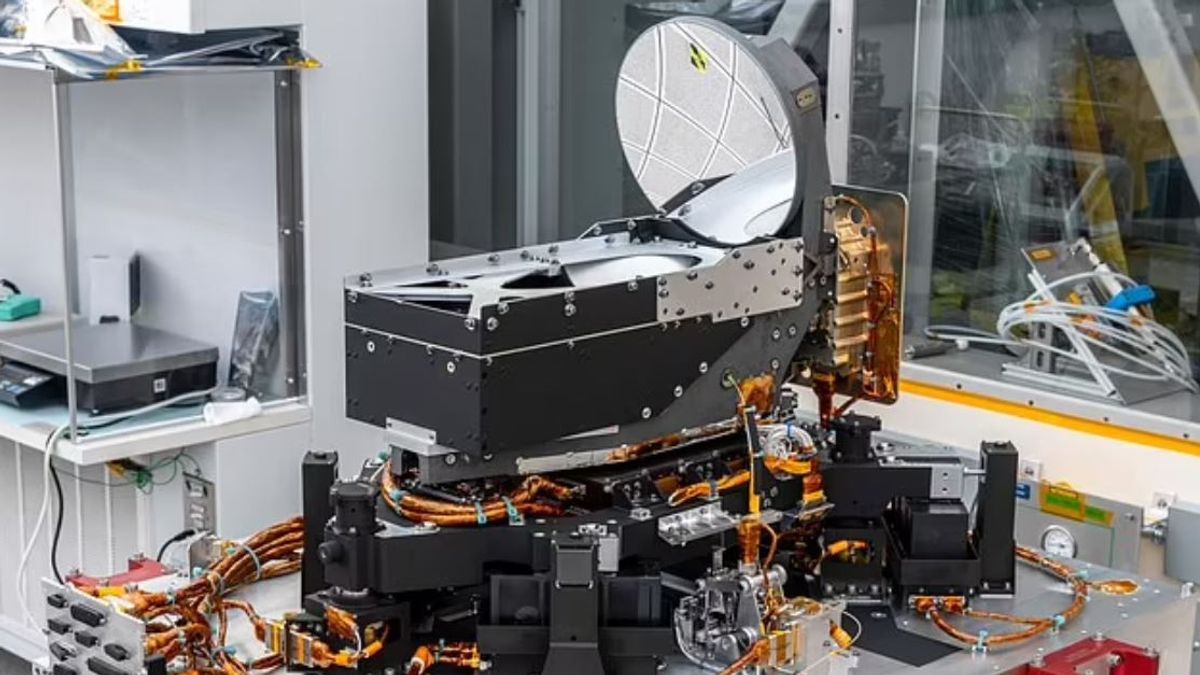JAKARTA - A laser that originates from a distance of more than 10 million miles has hit Earth. However, in contrast to the film Independence Day, this laser is completely harmless. NASA also stated that aliens were not the cause.
The laser was directed to Earth by NASA's spacecraft called Psyche, which is currently more than 10 million miles (16 million kilometers) from Earth. To give an idea, it's 40 times further from the moon.
NASA hopes this new technology one day could allow astronauts on future missions to make video calls to Earth from a distance as far as Mars.
This is the first trial, or 'first light', of Deep Space Optical Communications (DSOC) laser systems. This is also the first time a laser is used to transmit data from further away from the Moon.
NASA says it wants to use the technology tested here to build communication networks in space, such as fiber optic cable networks used on Earth.
The DSOC traveled with the Psyche ride while completing a 2.2 billion-mile (3.6 billion kilometers) journey to the asteroid 16 Psyche between Mars and Jupiter.
On the trip, Psyche will do a 'Mars fly-by', giving NASA engineers the opportunity to see if future Mars missions can use lasers to stay connected to Earth.
"Achieving the first light is one of many critical DSOC milestones in the coming months,"ANT Kortes, director of Technology Demonstrations at NASA Headquarters.
Kortes added that this trial paved the way for 'high data-speed communication capable of transmitting scientific information, high-quality images, and video streaming to support the next major humanitarian leap'.
The satellite currently uses radio signals to communicate, receive commands and return data to the controller. Radio waves and lasers are both types of electromagnetic radiation that can pass through vacuum at the speed of light.
The difference is that, as infrared light is a high frequency wave, NASA's new laser communication system can transfer more information per second.
The flight laser transceiver takes data in bit form, and encodes it into the photon that forms the laser.
VOIR éGALEMENT:
Back on Earth, signals are received by a high-efficiency superconductor detector array that identifies individual photons upon arrival and decodes the data.
Although the signal is moving at a speed of light, a long distance makes it a big challenge to accurately direct the laser signal to the receiver on Earth.
The DSOC first locked the target at a powerful uplink laser light source emitted by the Optical Communications Telescope Laboratory at the Table Mountain JPL Facility in California.
This allows spacecraft to direct the laser to a communications array in Palomar, about 100 miles (130 km) to the south.
Badminton Srinivasan, head of DSOC operations for NASA's Jet Propulsion Laboratory, said that this trial "for the first time fully incorporates land assets and flight transceivers, requires DSOC and Psyche operational teams to work side by side".
"It's a big challenge, and we have a lot of other work to do, but for a while, we can transmit, receive, and decode some data," he added.
NASA is also preparing a two-way laser communication system on the International Space Station.
The English, Chinese, Japanese, Arabic, and French versions are automatically generated by the AI. So there may still be inaccuracies in translating, please always see Indonesian as our main language. (system supported by DigitalSiber.id)














